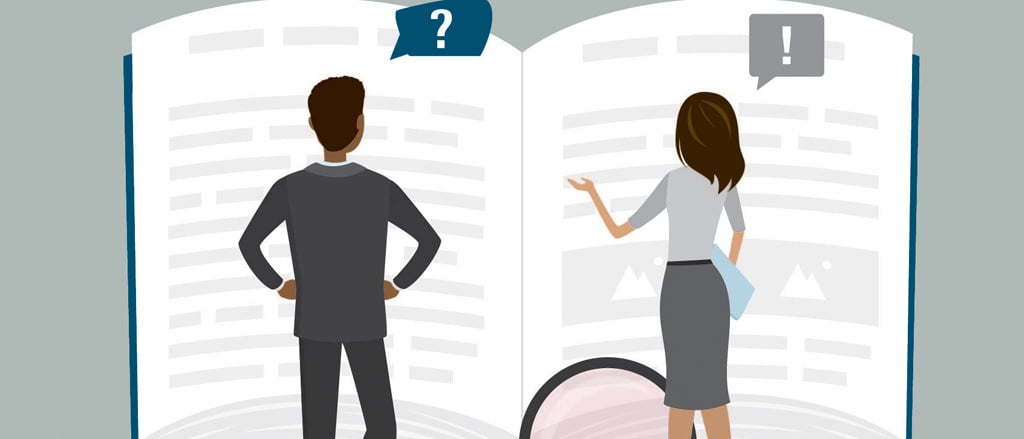
Mastering garnishments: what every Canadian employer needs to know
Be honest: when you see the word “garnishments,” do you tense up? We get it: whether it’s child support deductions, unpaid taxes, or credit card debt, garnishments are a complex and sensitive topic affecting both your employees and your business. And when you’re faced with managing garnishments as a business owner, it’s essential to have a clear understanding of the process so you can do right by your team.
Payworks is here to help! Let’s explore the different types of garnishments, how they differ between regions, and how we can support you in staying legislatively compliant.
Getting it right before you deduct
Before we dive into the details of garnishments, let’s break down what they are and how they impact you as an employer.
Wage garnishments, also known as garnishee orders, are legal orders requiring you to withhold a portion of your employee’s earnings to assist in payment of their debt or compliance with a legal obligation. This typically occurs through a court order or direction from the Canada Revenue Agency (CRA) for you as their employer to deduct a fixed amount of their wages and remit to the appropriate creditor until the debt is paid off or the garnishment order is lifted.
As an employer, it’s critical to understand your legal obligations when it comes to garnishments. Mishandling a garnishment, whether through incorrect deductions, delayed remittances, or simply misunderstanding local rules, can expose your business to legal and financial consequences, such as being held liable for the unpaid debt.
Payworks pro tip: Since Canadian garnishment laws differ across provinces and territories, partnering with a payroll provider with Canadian roots can have a major positive impact! With Payworks’ all-Canadian support and a deep understanding of local legislation, we help ensure your business stays compliant. Our payroll system simplifies the garnishment process (even if you’re handling multiples) by automating deductions, offering payment options based on garnishee orders, tracking arrears, and giving you detailed reporting, so you can stay compliant with a whole lot less stress.
Understanding federal vs. provincial and territorial garnishments
When it comes to garnishments in Canada, there are two primary types of which employers need to be aware: federal garnishments from the CRA and provincial or territorial garnishments issued by a court. While both result in deductions from an employee’s pay, not all garnishment rules are created equal. There are differences in how they’re issued, to what types of debts they apply, and how much can be garnished, which can make things confusing – and potentially risky – for employers.
Federal Garnishments Federal garnishments, also known as Requirement to Pay (RTP), are issued directly to employers by the CRA and don’t require a court order. If an employee owes money to the CRA and fails to pay it, you’ll receive an RTP instructing you to deduct and remit the owed amount directly to the CRA and/or RQ.
These garnishments are typically issued to recover unpaid income taxes or overpayments of Employment Insurance (EI) or Canada Pension Plan (CPP) benefits, and the CRA can garnish anywhere from 30% to 100% of an employee’s wages, depending on the circumstances. Once you receive this notice, you’re legally obligated to deduct and remit all amounts as specified. Failure to comply with a federal garnishment can result in your business becoming fully liable for the amount owing.
Provincial and Territorial Garnishments
In contrast, provincial and territorial garnishments are court-ordered and governed by the province or territory in which the employee works. These orders are often the result of a civil judgement (for example, when a creditor wins in small claims or divisional court and is granted the right to garnish wages to pay a debt).
Unlike federal garnishments, creditors can’t issue these orders directly and have to go through the courts, where the provincial or territorial government is responsible for tracking and enforcing them. Each province and territory has their respective legislation that governs how much of an employee’s wages can be garnished, as well as minimum exemption amounts. For example:
- In Manitoba, under The Garnishment Act, employers must ensure that 70% of an employee’s wages remain exempt, with a minimum exemption amount of $250/month for those without dependents and $350/month for those with one or more dependents.
- In Ontario, under the Wages Act, 80% of an employee’s wages is protected from garnishment, but in some cases, a judge can lower or raise these exemption limits based on the employee’s financial situation and the nature of the debt. If there’s a legal dispute over garnishment amounts, employers may be asked to send the disputed amount to court (known as paying into court) instead of to the creditor. In this case, the court holds the funds and releases them once a final decision is made.
- In British Columbia, under the Court Order Enforcement Act, employers must ensure that 70% of an employee’s wages remain exempt, with a minimum exemption amount of $100/month for those without dependents and $200/month for those with one or more dependents. For family support debts (for example, child support), up to 50% of wages can be garnished if monthly wages are $600 or less, eliminating the 70% exemption rate.
Payworks pro tip: You can see why it makes a big difference to lean on a third-party payroll provider – one who knows the local ins and outs! Payworks has compliance baked into our platform. Our system can automatically apply legislative rules, like Provincial Subsistence Rules that ensure employees keep enough wages each month to live on, using flexible calculation options. Businesses can also easily bypass them when federal garnishments require full repayment - so you stay compliant every time!
Navigating garnishments – it’s easier together!
From understanding the nuances of regional garnishment requirements to ensuring each garnishment is calculated and applied correctly, Canadian employers carry a significant responsibility – but it doesn’t have to be overwhelming.
Our Payroll solution is built specifically for Canadian employers, with automatic deductions based on the correct federal or provincial and territorial garnishment rules. This can simplify the handling of multiple garnishments, aiding in their correct prioritization, arrears tracking, accurate withholding and remittance, and more. Plus, with built-in compliance checks for provincial and territorial exemption thresholds and detailed reporting for audits, court requests, or internal records, you can stay confident that you're meeting every obligation.
Ready to simplify garnishments (and more payroll tasks like this)? Book a demo to see how we can help you turn a complex process into a streamlined part of your payroll operations: https://www.payworks.ca/landing-pages/campaigns/book-a-demo.
Key topics in this article:
ResourcesPayroll ResourcesBusiness OwnerSMEFranchiseeHospitalityPayroll ManagementLegislationThese articles are produced by Payworks as an information service. They are not intended to substitute professional legal, regulatory, tax, or financial advice. Readers must rely on their own advisors, as applicable, for such advice.














